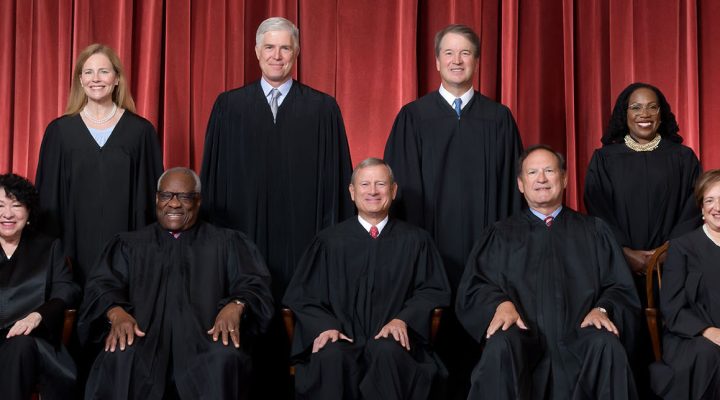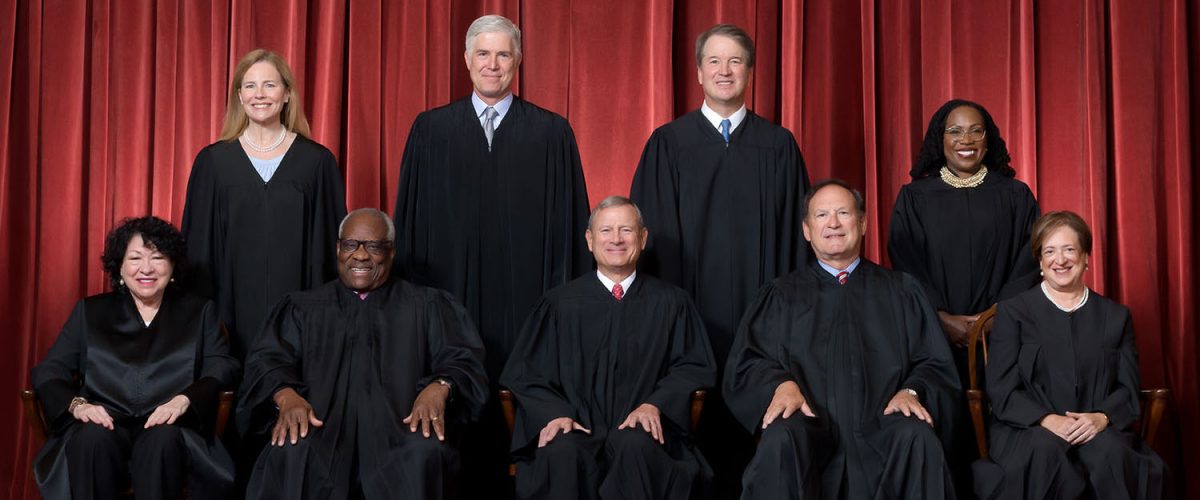Every four years, the people who are most politically engaged in American law and politics tend to focus their autumn energy on the upcoming November election. The annual October kickoff of the U.S. Supreme Court term may be overlooked. That is certainly the case in light of the tumultuous turns of events in this year’s election cycle, although at least some of the interest in this presidential election could be attributed to dramatic developments at the Supreme Court in recent years. Decisions that overruled long-standing precedents and revelations raising concerns about judicial ethics have even inspired real conversations and concrete proposals about reforming the court itself.

Holly Hollman
Fortunately, the court did no direct damage to religious freedom in the term that ended this summer — there were no cases addressing the religion clauses, and none have been granted review in this October term (yet). This surprising respite is well-deserved, coming after a half-dozen decisions impacting the relationship between religion and government were issued in the previous two terms.
That blitz of religion-related cases included a decision that required a state to fund private religious schools and one that abandoned a decades-old test for interpreting the Establishment Clause. In the latter case, the court provided little guidance other than requiring that courts look to “historical practices and understandings,” leaving lower courts to struggle on where to draw judicial lines consistent with the promise of religious freedom in the First Amendment.
“Fortunately, the court did no direct damage to religious freedom in the term that ended this summer.”
That said, the previous Supreme Court term was highly consequential. There were several cases where religious values and religious organizations have something to say, including cases about access to abortion, voting rights, homelessness and gun control. Not surprisingly, those cases were overshadowed by the most headline-grabbing 6-3 decisions: Trump v. U.S., the case in which the court found broad presidential immunity from criminal charges; and Loper Bright Enterprises v. Raimondo, the case that overruled the Chevron case that forms the basis of long-standing principles for administrative law.
In the shadow of those cases, two decisions appeared to mark the outer limits for extreme arguments aimed to push a highly political court. The court rejected “standing” (the right to sue) for a group of doctors that challenged regulations governing the distribution of mifepristone, a drug that is used in medical abortions. And the court reversed a decision that held unconstitutional a federal law that bars gun possession by anyone who is subject to a restraining order for domestic violence.
In the latter case, United States v. Rahimi, the court addressed and somewhat refined its newly adopted “history and tradition” test in Second Amendment jurisprudence. The 8-1 decision (with only Justice Clarence Thomas dissenting) upheld the federal law as consistent with the nation’s history and tradition of firearm regulation to stop individuals who threaten physical harm to others from misusing firearms. The law at issue had been challenged successfully in the court below by a violent abuser with factual circumstances that exposed the preposterous ends to which the court’s history test could be pushed.
Rahimi provided an opportunity for Chief Justice John Roberts to state that some lower courts have misunderstood recent case law, noting that the Supreme Court’s jurisprudence was “not meant to suggest a law trapped in amber.” The proper question, he said, is “whether the new law is ‘relevantly similar’ to laws that our tradition is understood to permit, applying faithfully the balance struck by the founding generation to modern circumstances.” Moreover, he said courts should focus on the purpose of the regulation at issue and the burden that it places on the constitutional right conferred by the Second Amendment.
The justices voted 8-1 on the Rahimi decision, which corrected an egregious lower court decision. But there were multiple concurrences, demonstrating serious disagreement among the justices.
The case highlights problems with the court’s recent overreliance on history as the key both to constitutional interpretation and to supposed bias-free decision-making from the bench. History, of course, has an important role to play in judicial analysis by justices across the ideological spectrum. It is certainly a significant part of what we, as religious freedom advocates, have long relied on to protect the free exercise of religion and against government establishments of religion. Yet, we also know there are dangers to a rigid adherence and narrow telling of history in our flawed country. It inevitably leaves people out of the promises of our Constitution and undercuts the fight for freedom and justice, upon which our commitment to religious freedom is based.
Holly Hollman serves as general counsel for BJC in Washington, D.C.
Related articles:
Why is this still happening? | Opinion by Holly Hollman
The Supreme Court’s refreshing unity on religious freedom | Opinion by Holly Hollman


